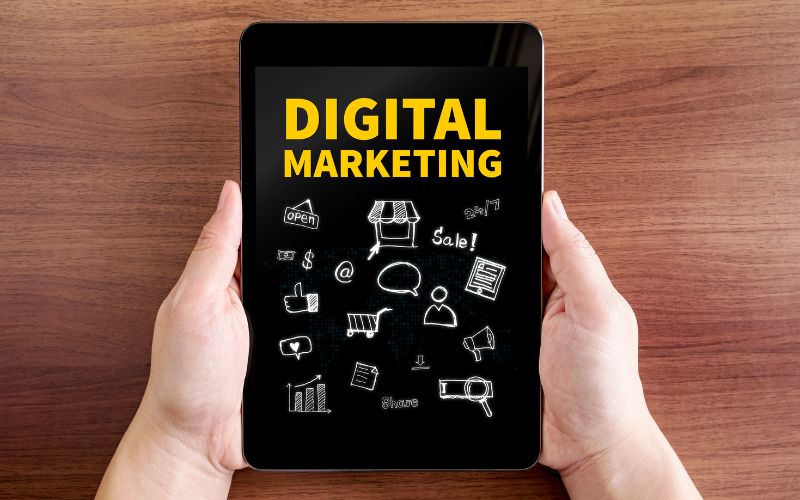Building an Effective Digital Marketing Funnel

A digital marketing funnel is a strategic model that guides potential customers through the stages of their buying journey, from awareness to conversion and beyond. By understanding and optimizing each stage of the funnel, businesses can improve customer engagement, enhance lead generation, and ultimately increase sales. Here’s a step-by-step guide to building an effective digital marketing funnel.
1. Define Your Goals and Objectives
Before creating a digital marketing funnel, it’s essential to define clear goals and objectives. Consider what you want to achieve at each stage of the funnel. Are you aiming to increase brand awareness, generate leads, nurture existing leads, or drive sales? Establishing measurable objectives helps guide your strategy and provides benchmarks for evaluating success.
2. Understand Your Target Audience
Knowing your target audience is crucial for building an effective funnel. Conduct thorough research to create buyer personas that outline your ideal customers’ demographics, preferences, pain points, and behaviors. Understanding your audience allows you to tailor your messaging, content, and offers to meet their specific needs at each stage of the funnel.
3. Create Awareness: Top of the Funnel (TOFU)
The top of the funnel is where potential customers first become aware of your brand. At this stage, your goal is to attract and engage your target audience. Utilize content marketing, social media, SEO, and online advertising to generate awareness. Consider the following tactics:
- Educational Content: Create blog posts, videos, infographics, and eBooks that address your audience’s pain points and provide valuable information.
- Social Media Marketing: Share engaging content on social media platforms to reach a broader audience and encourage sharing.
- Paid Advertising: Use pay-per-click (PPC) ads and social media ads to target specific demographics and drive traffic to your website.
4. Generate Interest: Middle of the Funnel (MOFU)
Once potential customers are aware of your brand, the next step is to generate interest and nurture leads. At this stage, you want to engage your audience further and encourage them to learn more about your products or services. Strategies for the MOFU include:
- Lead Magnets: Offer valuable resources, such as free trials, webinars, checklists, or exclusive content in exchange for contact information.
- Email Marketing: Implement email marketing campaigns to provide targeted content and nurture leads. Personalize your emails based on the recipient’s interests and behavior.
- Case Studies and Testimonials: Share success stories and testimonials to build trust and demonstrate the value of your offerings.
5. Nurture Leads: Bottom of the Funnel (BOFU)
At the bottom of the funnel, the focus shifts to converting leads into customers. This stage requires a more personalized approach to address potential objections and guide prospects toward making a purchase. Consider the following tactics:
- Product Demos and Trials: Offer free trials or demonstrations to showcase the benefits of your product or service.
- Personalized Offers: Provide tailored offers or discounts to encourage conversions based on the prospect’s behavior and preferences.
- Retargeting Ads: Use retargeting ads to remind prospects of your offerings and bring them back to your website.
6. Encourage Post-Purchase Engagement
The digital marketing funnel doesn’t end with a sale. Engaging with customers after their purchase is vital for fostering loyalty and encouraging repeat business. Strategies for post-purchase engagement include:
- Follow-Up Emails: Send personalized follow-up emails thanking customers for their purchase and offering additional resources, such as guides or tutorials.
- Loyalty Programs: Implement loyalty programs to reward repeat customers and encourage referrals.
- Feedback and Reviews: Request feedback and reviews to understand customer satisfaction and improve your offerings.
7. Analyze and Optimize Your Funnel
Regularly analyzing and optimizing your digital marketing funnel is essential for improving its effectiveness. Use analytics tools to track key metrics at each stage of the funnel, such as traffic sources, conversion rates, and drop-off points. Identify areas for improvement and make data-driven adjustments to your strategy. A/B testing different elements, such as ad copy, landing pages, and email campaigns, can provide insights into what works best for your audience.
8. Utilize Marketing Automation
Implementing marketing automation tools can streamline and enhance your digital marketing funnel. Automation allows you to send personalized emails, manage leads, and track user behavior more efficiently. By automating repetitive tasks, you can focus on creating valuable content and building relationships with your audience.
Conclusion
Building an effective digital marketing funnel is a strategic process that requires understanding your audience, defining clear goals, and optimizing each stage of the customer journey. By generating awareness, nurturing leads, and encouraging post-purchase engagement, businesses can improve customer relationships, drive conversions, and boost overall sales.
Regular analysis and optimization, combined with marketing automation, will ensure that your funnel remains effective and responsive to changing customer needs. By investing in a well-structured digital marketing funnel, you can enhance your marketing efforts, achieve sustainable growth, and ultimately succeed in the competitive digital landscape.
